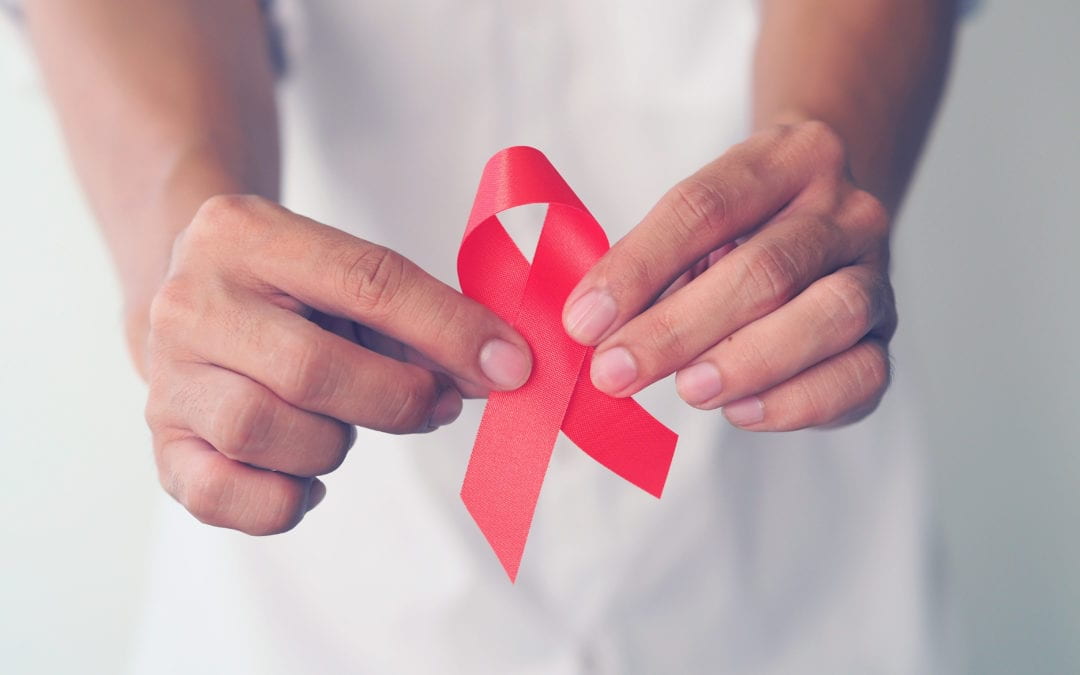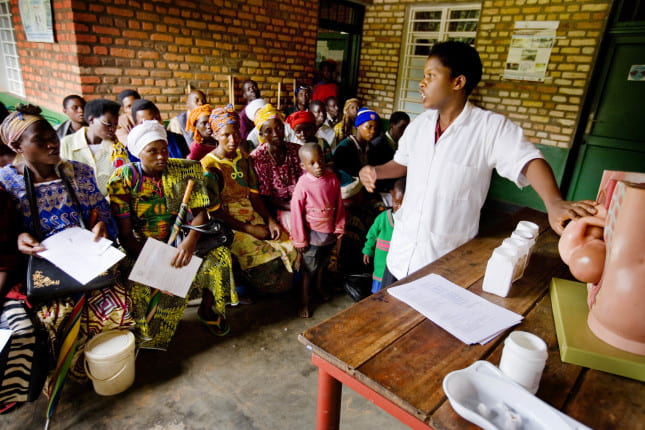
by Zahraa Berjawi | Nov 25, 2021 | Dashboard, Visualization
FROM “Man up, you can’t be depressed just because this happened!” TO “Why are you looking so sad and tired? Are you depressed? You can talk to me if you want..”
To begin with, according to the World Bank dataset on development indicators, it is clear that men’s average suicide mortality rate is significantly higher than females.

Surprisingly, males are three times more suicidal than females, reaching an average of 14.3 male suicides per 100,000 males, while 4.4 female suicides per 100,000 females.

But why is this the case?
 While comparing countries with high unemployment rates and countries with low unemployment rates, the following analyses were investigated:
While comparing countries with high unemployment rates and countries with low unemployment rates, the following analyses were investigated:
To begin with, in Countries with highest unemployment rates, the suicide mortality rates for both men and women are higher.
However, when faced with difficult economic situations:
- Females suicide mortality rates were higher by 150%
- Males suicide mortality rates were higher by 217%
This leads to the conclusion that men’s mental health tends to be more susceptible to financial burdens.
So, what should be done?
A potential solution would be providing unemployment benefits, which are governmental compensations that are provided for unemployed people. These compensations help secure a stable income after the layoff of an employee, and they improve unemployed people’s productivity in the labor market by improving job matching and connecting employees to employers.
In addition, this solution can be helpful in mitigating the impact of unemployment on the psychological wellbeing of people.
As the following illustration shows, both females’ and males’ suicide mortality rates are higher in countries with lower adequacy and coverage of unemployment benefits

More specifically, males’ suicide rates are 31% lower in countries with high adequacy and coverage of unemployment benefits.
Thus, in order to mitigate the males’ suicide mortality, several recommendations are suggested to be effective.
- First, it is highly recommended that suicide prevention groups intensify their focus on men and encourage them to express themselves and seek psychological help.
- Equally important, in countries with high unemployment rates, governments should work on providing unemployment benefits and ensure their wide coverage of the unemployed.
Thank you

by Carla Sfeir | Nov 24, 2021 | Dashboard
“When you carry a life and it’s there, and then gone, a part of your soul dies. Forever.”
As per Wikipedia, Infant Mortality is the death of young children under the age of One
Also, as per Wikipedia, there are other types of Infant Mortality which are:
Neonatal: a death that occurs in the 1st 28 days of life and Stillbirth Mortality: when a baby dies in the womb.
BUT, WHAT DOES INFANT MORTALITY MEAN TO NELLY who lost her baby in her six-month pregnancy?
What does it mean to her to lose her baby after waiting for months for his birth?
How Infant Mortality will affect her Emotionally, Physiologically and Psychologically?

As per Nelly, Infant Mortality is the death of her soul translated through a wide range of psychological and physiological problems including depression, anxiety, cognitive and physical symptoms linked to stress, marital problems, physical pain, sadness, frustration, anger, solitude, guilt…
As a Global Overview, the majority of the deaths are referred to Infant, Neonatal and Stillbirth Mortalities. We further investigated the areas in which high Infant Mortalities are occurring and we noticed that poor countries witness higher mortality rates compared to the developed countries.
Globally, as a way to enhance health of pregnant women and to reduce reduce infant mortality, Governments with the help of Humanitarian Organizations were establishing Prenatal and Postnatal Care Programs. We can notice a negative correlation between these care programs compared to infant mortality rates over the period from 1991 and 2019. Numerous studies showed their power to create more successful infant health.
While in African regions, pregnant women tend to have low adherence to Prenatal and Postnatal care regimens as shown in the graph due to the fact that Prenatal care programs were administered 6 times only over a period of 20 years and Postanatal care was administered 1 time in 2016.
Noting that in 2008, when 97% of pregnant women were administered Prenatal care resulting in a significant decrease of Infant Mortality rate.
UNICEF made efforts towards decreasing infant mortality rates which resulted in remarkable progress in child survival in the past three decades, and millions of children have better survival chances in the 1990-2019 period.
Also, UNICEF attempted to reduce infectious diseases that have high risks on infant survival. The Organization procured Antiretroviral Medicines against HIV diseases, which are represented by the red circles. The larger the circle indicates a higher percentage of pregnant women who received these medicines to Reduce the Risk of Mother-to-Child Transmission, thus reducing risks of infant mortality. The darker the grey shading indicates a higher share of women above 15 years old infected with HIV, and as we can see they are highly located in Africa.
The efforts made by Governments and Humanitarian Organizations were beneficial resulting in a decrease in infant deaths by approximately 50% over 30 years. However, infant mortality rates still represent 79% of total mortalities in 2019.
WHAT should we do GLOBALLY?
A Call to Action and a Request for Continuous Support
Prenatal Care
– Developing enhanced prenatal care, including psychosocial support, education and health promotion.
– Expanding and improving home visiting programs.
Postnatal Care
– Reinforcement and development of the interventions as employing more midwives; empowering mothers, families and communities on Maternal and Neonatal Health issues by providing ease of access especially in African regions.
Sustainable Development
– Tackling infectious diseases such as HIV, Anemia, Malaria specially in African regions to reduce mother-to-child transmission and increasing infant survival rates.
– Promoting healthy lifestyle.
Work jointly with community leaders, government, trade unions and employers to understand health challenges and to offer pregnant women sufficient comfort.
WHAT should we additionally do to African regions?
We were very concerned about the infectious diseases that highly affect Infant Mortality Rates.
We noticed in the following graph that as health expenditures increased, infant mortality decreased. So we decided to seek additional funds to support the health system. Then, we analyzed the types of expenditures spent on health, we found that External funding is too low representing only 11% of total Health Expenditures.
Seeking for additional funds from External Sources would be a good idea for increasing health expenditures hence decreasing infectious diseases and increasing survival rates in Africa.

by khh09 | May 10, 2021 | Uncategorized

Meet Ahmad
Ahmad is a young and healthy adult who likes to engage in various sports. However, he suffers from severe cases of asthma and regularly takes prescribed medications along with his inhaler. Like many people his age, Ahmad is very ambitious about his future and hopes one day that he can become a world star athlete.
Unfortunately, Ahmad is living in Qatar which is known to have a very harsh environment that is filled with air pollution and CO2 emissions that can risk his healthcare and well being.
Let’s Examine what Ahmad is up against!
The following Visual is a Bar Chart displaying the average CO2 emissions (metric tons per capita) in Arab countries
Observations

Ahmad was simply shocked!!
Although Ahmad knew that Qatar had very high levels of air pollution, he was not excepting it to be the highest among all other Arab countries. Ahmad had to act fast and think about ways to convince his parents to finance his journey to a cleaner country with low levels of greenhouse gas emissions. However, the previous graph was not entirely convincing for his father since he wanted to have a more visual understanding of the countries.
A better Visual?
The following Visual is the same visual presented before but projected on the map of the Arab World
Before Deciding
 Although it seemed Obvious for Ahmad to travel to any of the countries that had low levels of C02 emissions, Ahmad’s Father wanted his son to have a good future prospect. The father demanded to know which of these countries had low levels of unemployment. After a lot of hard work, Ahmad was able to come up with a great visual that explains exactly what his father wants.
Although it seemed Obvious for Ahmad to travel to any of the countries that had low levels of C02 emissions, Ahmad’s Father wanted his son to have a good future prospect. The father demanded to know which of these countries had low levels of unemployment. After a lot of hard work, Ahmad was able to come up with a great visual that explains exactly what his father wants.
Now That’s Clearer
The following Visual is a Stacked Bar chart displaying the average CO2 emissions (metric tons per capita) and % of unemployment in Arab countries
Problem Solution
| Potential Solutions |
Solution Validation |
Recommendation |
| For Better Future: Convince Ahmad’s father to finance his travel to Saudi Arabia |
it has less CO2 levels (12.62) with slightly higher unemployment rate (5.58%) |
Try Exploring other Non-Arab Countries that meet Ahmad’s requirement |
| For Better Health: Convince Ahmad’s father to finance his travel to Lebanon |
it has significantly less CO2 levels (2.96) but a higher unemployment rate (8.63%) |
If to stay in Qatar for guaranteed employment, Ahmad should drastically change his lifestyle and become more health cautious |
Conclusion
 Ahmad has choices There is no “perfect” solution for Ahmad’s Situation but he has a few options to explore. The problem in our Arab World is that we are (in most cases) required to sacrifice important aspects of our lives to improve other aspects. This dilemma is affecting so many people across the Arab World, especially during these hard times.
Ahmad has choices There is no “perfect” solution for Ahmad’s Situation but he has a few options to explore. The problem in our Arab World is that we are (in most cases) required to sacrifice important aspects of our lives to improve other aspects. This dilemma is affecting so many people across the Arab World, especially during these hard times.

by ssm36 | May 10, 2021 | Visualization
HIV is a major health issue that is effecting the lives of many people around the world. However, recently HIV has become a manageable condition due to the increase in access to effective treatment and therapy. Antiretroviral therapy can save lives, protect health and reduce mother-to-child transmission. By that comes the importance of mothers, children, and adults receiving the lifelong Antiretroviral therapy.

by ami31 | May 9, 2021 | Dashboard, Visualization
Childbirth is considered to be a landmark and joyous moment in any woman’s life. And although health experts say that no two childbirth experiences are the same, it is quite astounding that this can, in many cases, reach the extreme of death. According to statistics released by UNICEF, the World Health Organization (WHO), the United Nations Population Division, United Nations Population Fund (UNFPA) and the World Bank Group, around 2.8 million pregnant women and newborns die every year of preventable causes [1]. This turns childbirth into an event to be feared as it poses a significant threat to the lives of many women across the globe. According to the United Nations’ , quality education is defined as one the of the seventeen sustainable development goals (SDGs), so how can education help mitigate childbirth mortality?
“Pregnancy is not a disease. It should not lead to deaths. Every maternal death should be regarded as an abnormality.” – Vivianne Ihekweazu, Director of the Nigerian Health Watch [2]
How are Childbirth Deaths Related to Education?
The World Development Indicators data from the World Bank [3] allows us to look into the impact of education on childbirth by exploring the percentage of births that are handle by skilled health staff. In the figure below, we plot the average life expectancy at birth in years with respect to the average percentage of births attended by skilled staff for each country. There is a clear positive correlation between the two variables. We therefore conclude that children who are delivered by skilled health workers during labor are more likely to have a higher life expectancy.
However, the impact of having educated people overseeing child delivery does not stop here. Unfortunately, carrying out child delivery without proper understanding of the necessary health procedures has more alarming implications. In the dashboard below, we notice a sharp decrease in both maternal mortality (women dying during labor) and neonatal mortality (newborns dying at birth) in countries where more childbirths are handled by skilled health workers. This implies that many of the childbirth related deaths can be attributed to the lack of necessary health skills.
Where are these Childbirth Deaths Mostly Occurring?
Below we find the places that suffer the most from this by selecting the countries that have a below average percentage of births attended by skilled staff.
By looking at the geographical distribution of these countries we unsurprisingly find that the majority is located in Africa. Furthermore, we notice that the educational attainment in these countries is significantly lower than countries that have more professionally handled childbirths. This is an expected causality since to have more skilled people perform childbirth procedures we need more educated people.
So the Solution Is, Educate More People!
“The benefits of education permeate all walks of life right from the moment of birth.” – Irina Bokova, Director-General of UNESCO [4]
In light of the above, we clearly need to have more educated people that are able to professionally handle childbirth procedures. This is especially needed in developing countries where childbirth mortality is more pronounced. A key approach strategy here is to educate the local birth attendants and community midwives that are already active in these communities. These local and community health workers are already more connected to the women and families in their towns making their newly found skills more accessible and allowing them to spread health awareness to pregnant women in their communities [5]. Finally some communities in rural Africa are located in remote locations faraway from any medical supply and service centers. Therefore, setting up portable medical outposts near these towns would greatly enhance the quality of services provided by birth attendants.
References
[2] E. Onyeji, “Despite having highest maternal mortality in Africa, Nigeria’s situation still underreported – Report,”
Premium Times Nigeria, 03-Dec-2020. [Online]. Available:
https://www.premiumtimesng.com/news/headlines/429266-despite-having-highest-maternal-mortality-in-africa-nigerias-situation-still-underreported-report.html.
[3] https://datatopics.worldbank.org/world-development-indicators/
[4] “Education can save lives, help reach sustainable development goals – UN agency,”
UN News, 18-Sep-2014. [Online]. Available:
https://news.un.org/en/story/2014/09/477702-education-can-save-lives-help-reach-sustainable-development-goals-un-agency.
[5] D. Shikuku and C. Ameh, “Investing in midwifery training and education for improved maternal and newborn outcomes,”
On Medicine, 19-Mar-2021. [Online]. Available:
https://blogs.biomedcentral.com/on-medicine/2021/03/19/midwifery-training-education-maternal-newborn-outcomes-isrctn/.



 While comparing countries with high unemployment rates and countries with low unemployment rates, the following analyses were investigated:
While comparing countries with high unemployment rates and countries with low unemployment rates, the following analyses were investigated:








